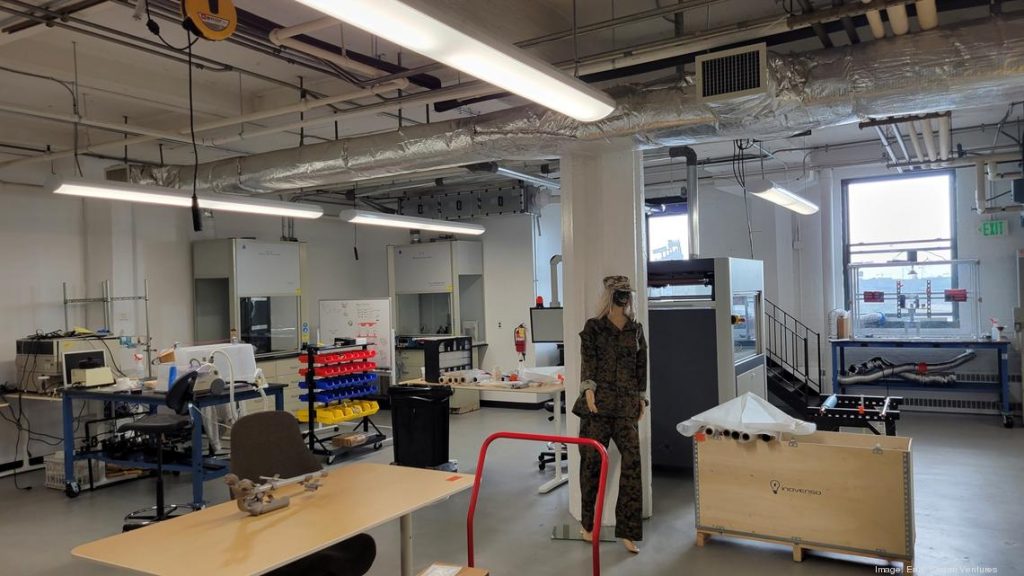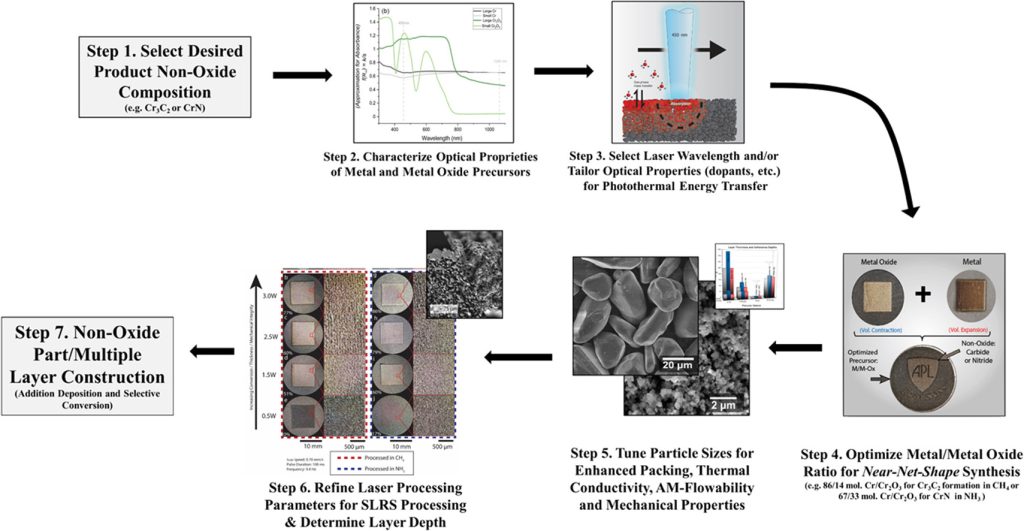Maryland-based start-up Synteris has raised $2.7 million towards the development of a novel ceramic 3D printing approach.
Known as Selective Laser Reaction Sintering (SLRS), Synteris’ technology is designed to serve as an alternative means of producing parts from non-oxide ceramics, like carbides, nitrides and borides. Using its newfound funding, awarded in the form of an ARPA-E grant, the firm now aims to deploy SLRS in the creation of a new form of electronics packaging, that’s capable of improving EV and aircraft performance.

Selective Laser Reaction Sintering
Operating as one of Early Charm Ventures’ nine subsidiaries, Synteris’ business revolves around a technology developed by its CTO Adam Peters at the Johns Hopkins Applied Physics Laboratory. Though the firm has made little public about its proprietary process, it’s understood to harness laser-induced reactions between a reactive precursor and gaseous atmosphere to synthesize carbides or nitrides.
Unlike normal ceramic 3D printing, Synteris’ technology is designed to enable the creation of ceramics in-situ, instead of directly laser melting them. According to Peters, 3D printing a precursor before using a chemical reaction to create a final ceramic in this way is beneficial, in that it allows manufacturers to overcome the fragility and high-temperature requirements associated with printing ceramics.
In the past, John Hopkins researchers have deployed Synteris’ method to develop near net-shape 3D printing ceramics, capable of yielding components with a sub-millimeter level of spatial resolution and viable layer thicknesses.
Since initially gaining R&D funding from the Office of Naval Research in 2016, Peters and his team have gone on to demonstrate SLRS’ ability to print with high-temp ceramics like silicon and zirconium carbide. In 2019, the entrepreneur later applied to patent the process, before commercializing it via the foundation of Synteris the following year.

ARPA-E’s $175M energy initiative
Synteris’ latest grant from the US government has been awarded as part of a $175 million Department of Energy program, set up to identify disruptive technologies that address the USA’s green energy challenges. The 68 projects selected for Open 2021 backing, which cover everything from offshore wind to nuclear recycling, are also expected to boost US energy security and jobs in these areas.
Leveraging its share of the funding, Synteris intends to deploy its technology to 3D print ceramic packaging for power electronic modules, the likes of which are used to transfer energy from batteries to electric motors. Specifically, the firm plans to invest in its ability to showcase the viability of its ceramics via mechanical testing, something that Peters says can be a pricey obstacle for start-ups to overcome.
“One of the machines we need generally costs half a million dollars,” Peters told Maryland Inno. “That’s not an easy ask, so I think this is going to open a lot of doors. If you can 3D print a unique geometry, you can have more efficient energy transfer, so you can get better performance and efficiency.”
“Being selected for ARPA-E funding is a great testament to the radically different approach we are taking to 3D printing ceramics.”
Ultimately using SLRS, Peters adds that it could be possible to 3D print modules with geometries that facilitate greater heat transfer, and therefore yield better efficiency and durability. Synteris’ ARPA-E funding follows another $150,000 grant gained from the Maryland Technology Development Corporation, via a scheme designed to help advance “technologies with significant commercial potential.”

Commercializing ceramic 3D printing
Though ceramic 3D printing is still being fully-optimized for higher-stress use-cases, it has increasingly shown potential as a means of addressing end-use clinical and green energy applications. XJet delivered its first Carmel 1400M 3D printer to Azoth earlier in 2021, a system featuring its NanoParticle Jetting metal and ceramic printing technology, which has previously shown medical part potential.
HRL Laboratories, an R&D center owned by General Motors and Boeing, has also made progress in this area, by developing a novel method of 3D printing Ceramic Matrix Composites. Using its approach, the firm says it’s possible to create glassy materials with propulsion, energy and chemical processing applications.
At a more experimental level, researchers at the Slovak University of Technology have even managed to formulate an accessible new ceramic for FFF 3D printing. Unlike many existing entry-level ceramics, the filament doesn’t require the use of adhesives or furnaces, making it cheaper to adopt for desktop 3D printer users.
To stay up to date with the latest 3D printing news, don’t forget to subscribe to the 3D Printing Industry newsletter or follow us on Twitter or liking our page on Facebook.
For a deeper dive into additive manufacturing, you can now subscribe to our Youtube channel, featuring discussion, debriefs, and shots of 3D printing in-action.
Are you looking for a job in the additive manufacturing industry? Visit 3D Printing Jobs for a selection of roles in the industry.
Featured image shows one of the spaces in which some of Early Charm’s companies develop products. Photo via Maryland Inno.



